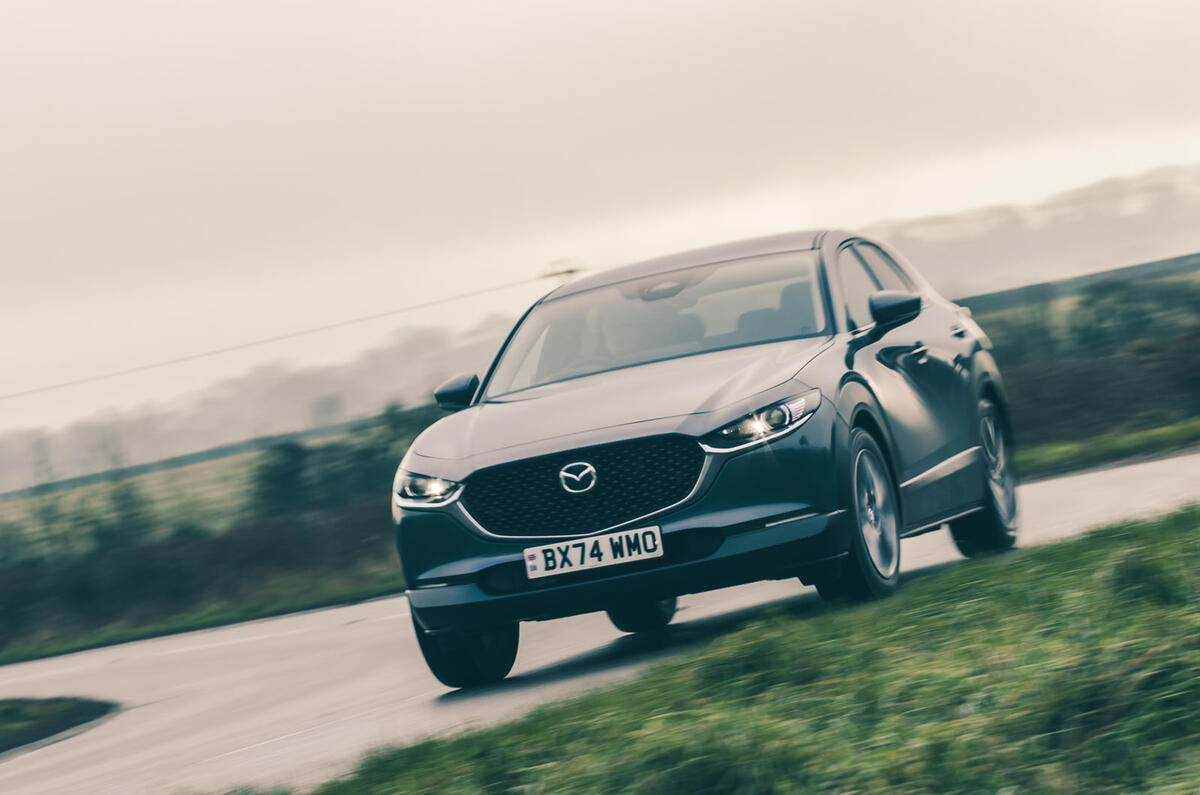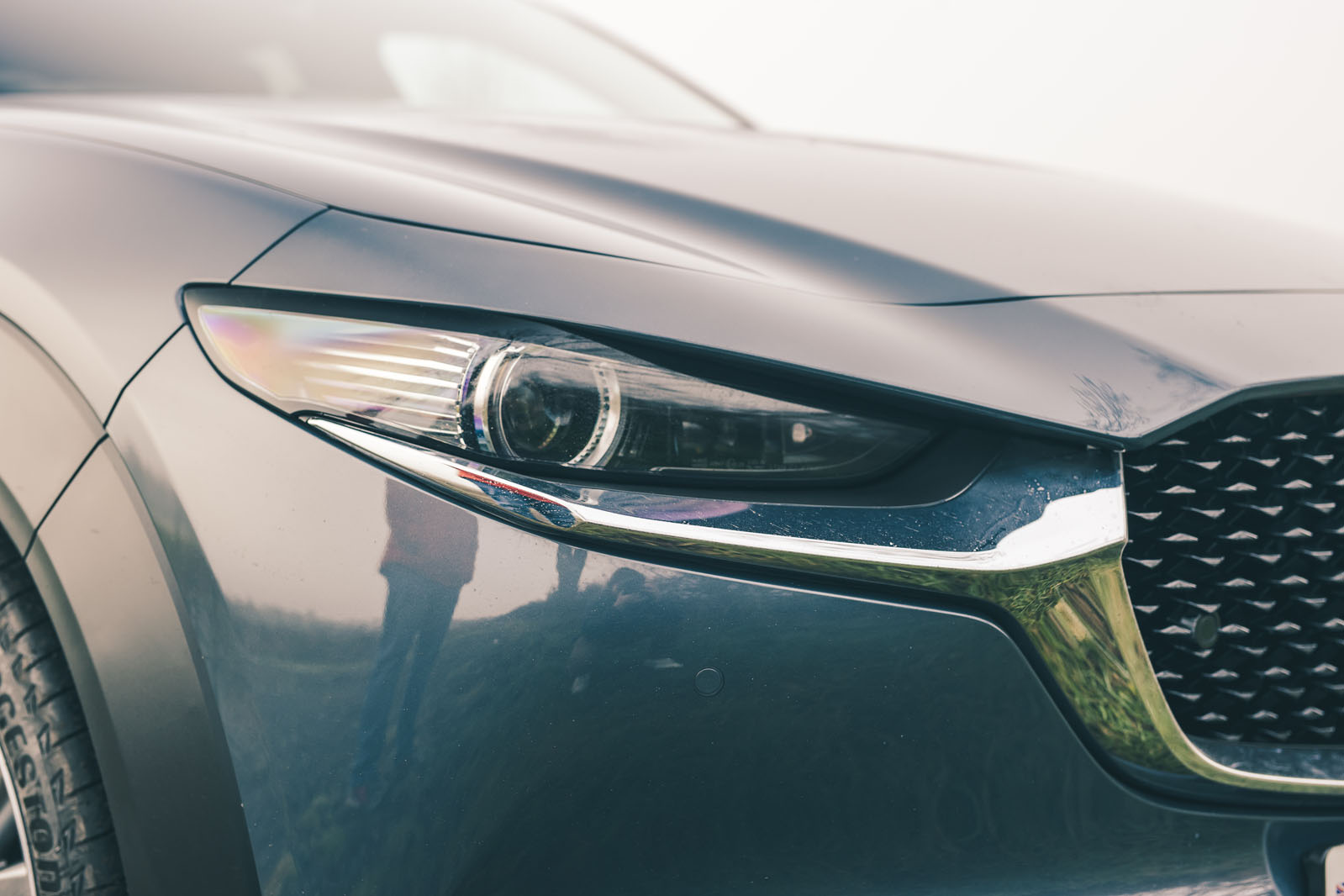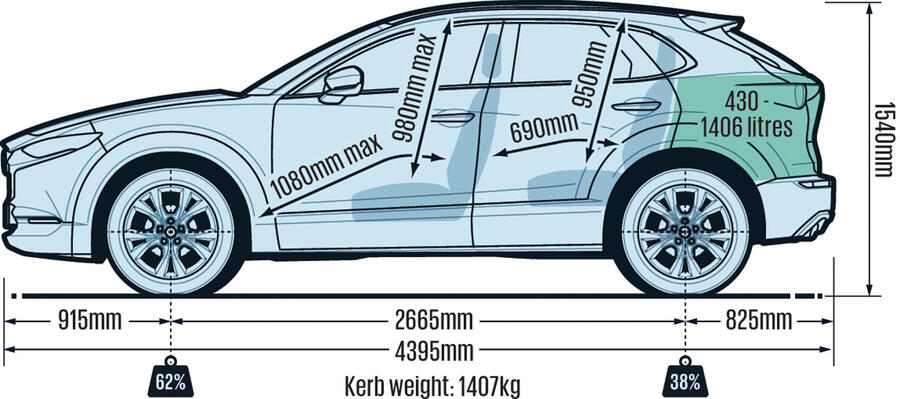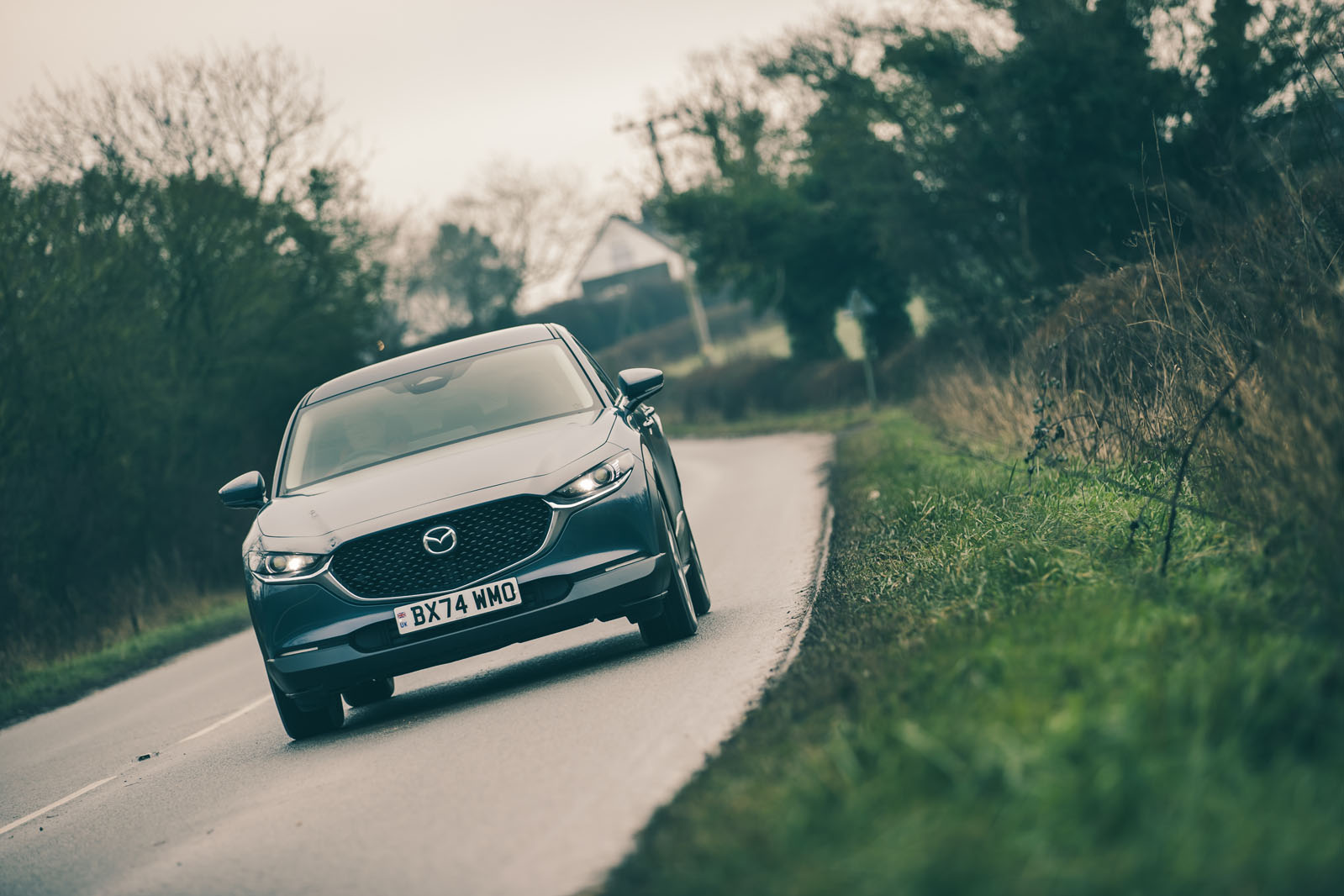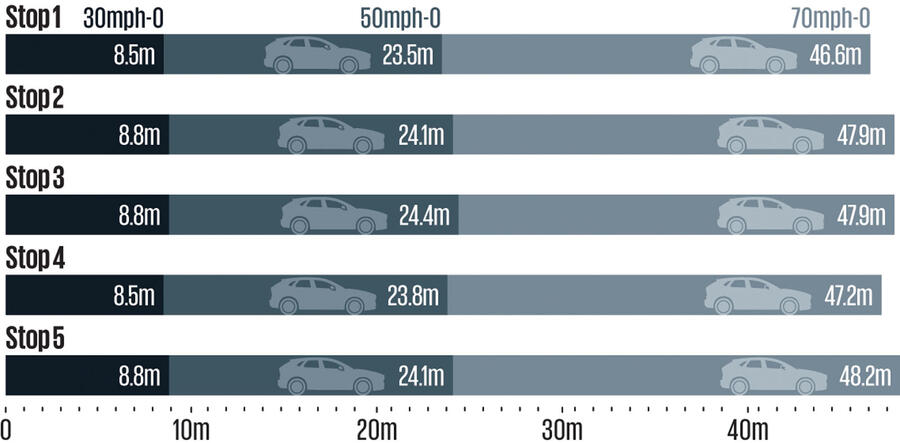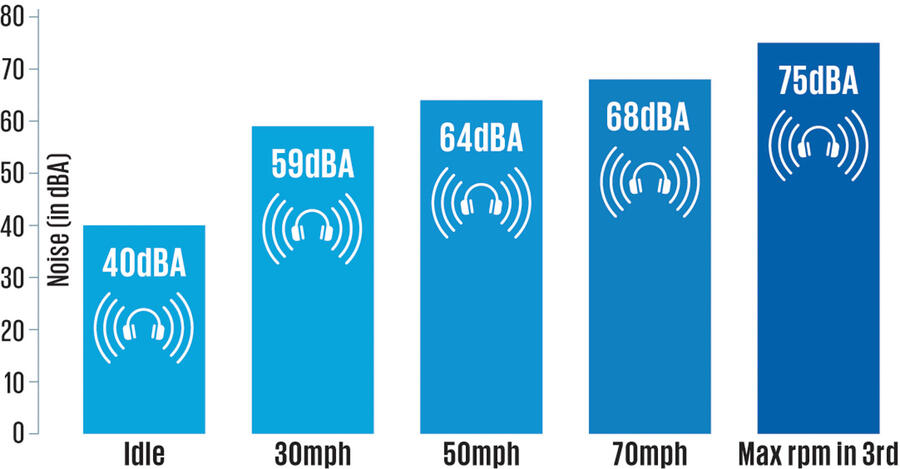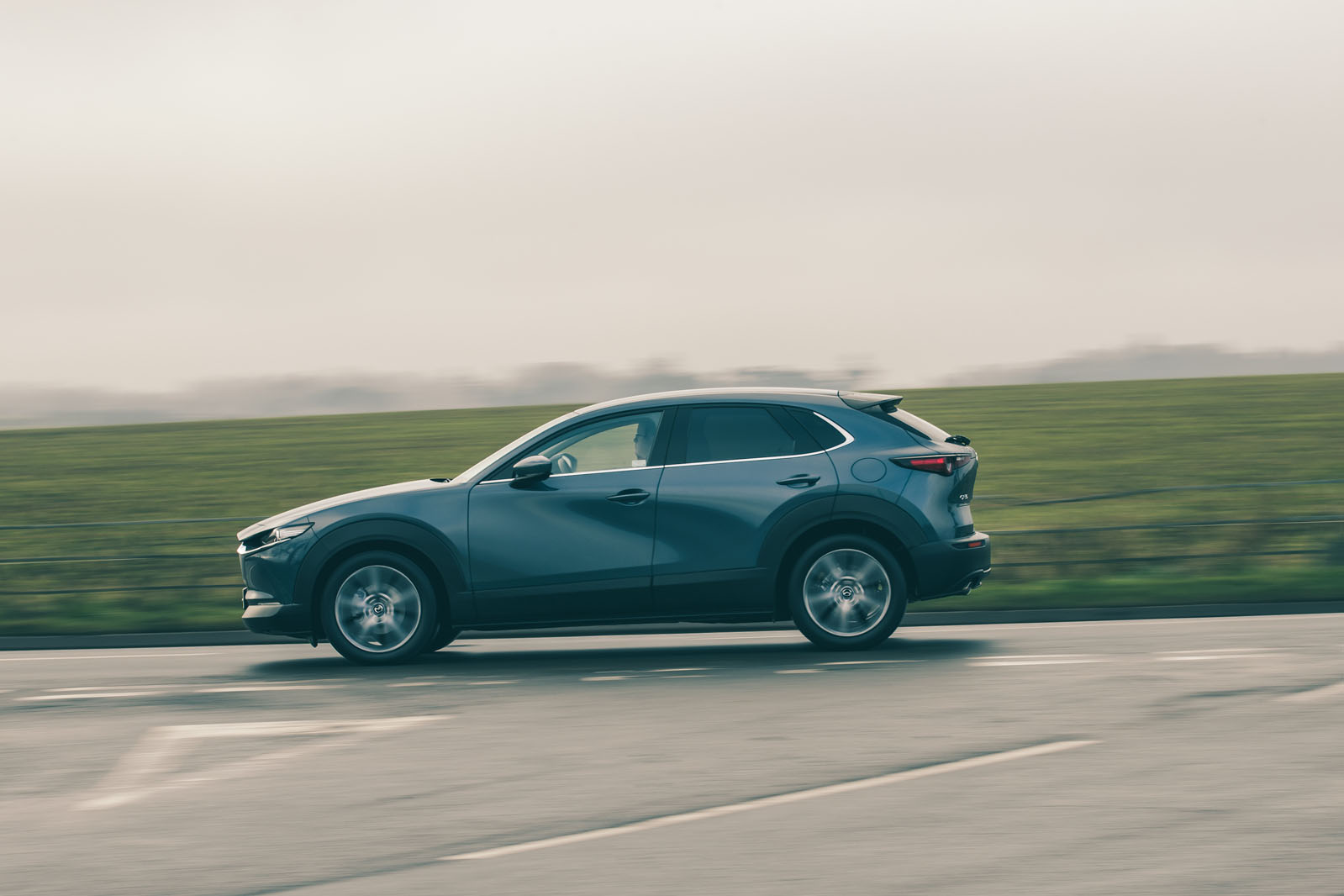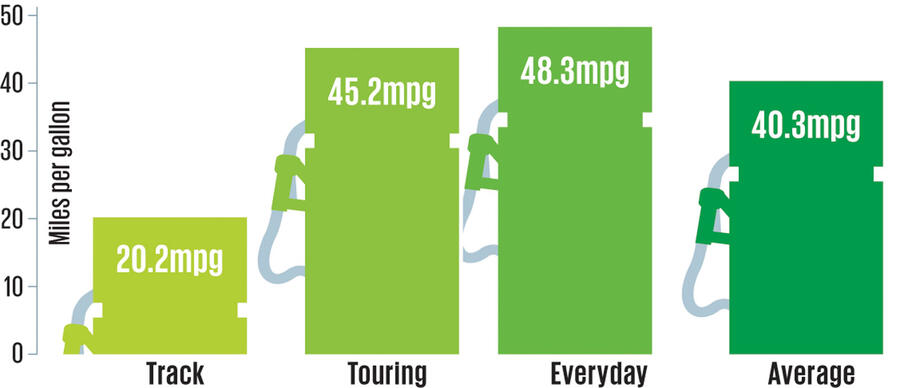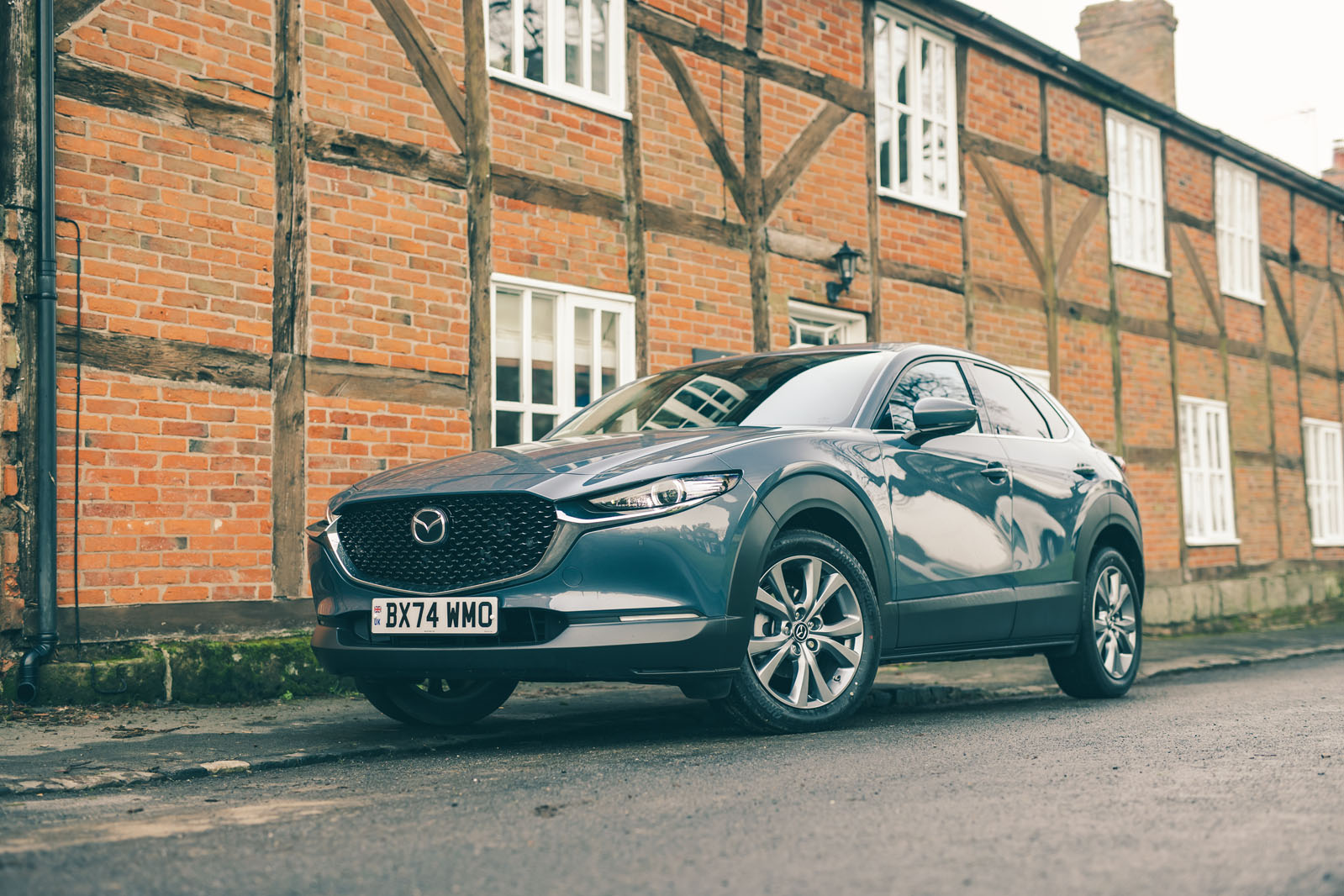There is little sense of a raised driving position at the wheel, or of a high roofline above your head. As it does from without, the car gives the impression that it’s simply a more practically minded five-door hatchback. It has a good-sized boot, a comfortable and spacious front row, and back seats that are fine for children and smaller adults but still not a match for cars like the Honda Civic or Skoda Octavia, never mind a Nissan Qashqai. It’s aiming to be “just enough car” – and, for younger families or empty-nesters, it might well be.
Our test car’s cabin had quite a dark, business-like ambience underlining a pervasive impression of good tactile material quality, and thoroughly well-thought-out ease of use. This isn’t an interior that gives touchscreen technology primacy. Permanent physical controls are retained for heating and ventilation, for the audio system and for navigating the infotainment system (which is one of the few left on the market that can’t be operated on a touchscreen basis). To the right of the steering wheel are physical buttons to quickly and easily deactivate the engine stopstart system, traction control, parking sensors and some of the ADAS functions.
It’s to Mazda’s considerable credit how much attention to detail has gone into the clarity and readability of the car’s analogue instruments, and the provision and location of all of its secondary controls, but also how hefty and expensive they feel. There’s tangible quality to the haptic feedback of the indicator and wiper control stalks, for example – a relaxing sensory appeal, even, about the softened tick of those indicators. It’s all a little reminiscent of the way noughties-era Volkswagens once felt.
Multimedia - 4.5 stars
The CX-30’s 10.3in multimedia screen is unlike the vast majority of similar systems because it’s controlled entirely via the rotary ‘commander’ positioned on the centre console. This might feel to some like antiquated technology, but soon enough you learn to embrace the control philosophy, which allows you to navigate the systems menus easily, without stretching an arm to hit fiddly screen icons, and without distraction from the road for more than a second’s glance at a time.
The system isn’t as stacked with networked features or streaming options as some, but it’s easy to use, it covers all the important functions, and some remote controls are available through the MyMazda smartphone app, through which you can send destinations to the sat-nav in advance.
Wireless smartphone mirroring for both Apple and Android devices is standard, as is wireless charging.



